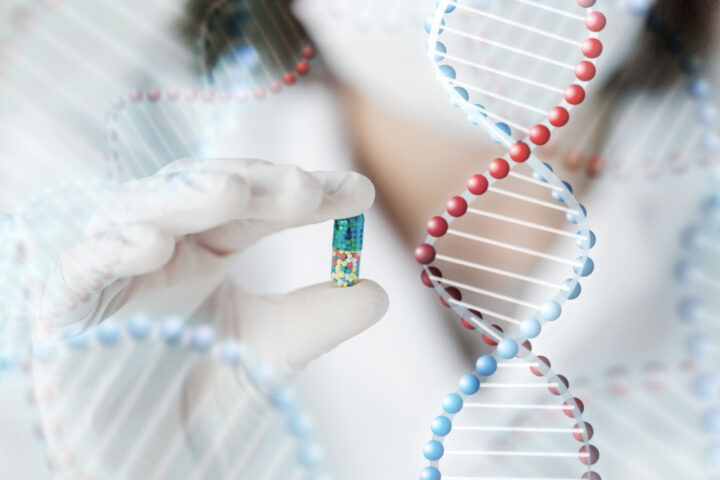In the world of immunology, the body’s defensive responses are critical to our survival. It’s like a biological version of an action movie, where each immune cell takes on an opponent—pathogens, damaged cells, or other harmful agents—with swift and deadly precision. However, as with any action-packed story, things can go wrong. The hero’s powers can be turned against the body itself, leading to dangerous outcomes, and this is where the NLRC5 protein takes the spotlight.
Setting the Stage: Understanding Innate Immunity
At the heart of our body’s immediate defense system is the innate immune response. This system detects foreign invaders or internal damage using pattern recognition receptors (PRRs), which act as sentinels, scanning for signs of pathogens or injury. One class of PRRs that has captured researchers’ interest is the NOD-like receptors (NLRs), which are highly conserved across species. Among these NLRs, NLRC5 is somewhat of an enigma, known primarily for its involvement in regulating MHC class I gene expression, which is crucial for immune system communication, especially in fighting infections and cancers. But recent research has shown that NLRC5 has a much darker side.
The Grim Role of NLRC5 in PANoptosis: When Cell Death Becomes a Threat
NLRC5 is not just a passive observer in the body’s immune response. It can be a key player in what scientists call PANoptosis—an inflammatory cell death pathway that merges three major cell death mechanisms: pyroptosis, apoptosis, and necroptosis. This convergence is orchestrated by a multiprotein complex called the PANoptosome.
Imagine a high-tech gadget that was supposed to disable threats but occasionally malfunctions and destroys everything in its path. That’s essentially what NLRC5 does when things go wrong in the body. The protein interacts with other molecules like NLRP12 to form the PANoptosome complex, driving this destructive form of cell death, particularly in response to depleted NAD+ levels. This depletion can occur under conditions like hemolysis or tissue damage, where molecules like heme are released into the bloodstream.
But why does the body, under some conditions, use such a drastic mechanism? It turns out that in diseases like colitis or hemophagocytic lymphohistiocytosis (HLH), excessive activation of NLRC5 can lead to widespread tissue damage and inflammation.
The Mysterious Connection Between NAD+ and Inflammation
NLRC5 is tightly regulated by NAD+ levels—a key molecule in cellular metabolism. You can think of NAD+ as the body’s internal energy currency, keeping cells running smoothly. But when NAD+ levels drop, due to aging, stress, infection, or chronic inflammation, NLRC5 senses this and responds by promoting cell death and inflammation.
This is particularly dangerous in conditions like hemolytic diseases, where red blood cells rupture and release heme into the bloodstream. In these cases, NLRC5 senses the combination of heme and other molecular danger signals, leading to a full-blown inflammatory response that often does more harm than good.
One of the most striking findings from recent research is that when NAD+ is restored (through supplementation with compounds like NMN or NR), this destructive pathway can be interrupted. By restoring NAD+, the body essentially calms NLRC5 down, preventing it from forming the PANoptosome and driving cell death.
Protecting Against Inflammatory Disease
Researchers tested the role of NLRC5 by deleting the gene in mice, creating NLRC5-deficient models to see how the body would respond to inflammatory conditions like colitis and hemolytic diseases. The results were striking: mice without NLRC5 were protected from these conditions, showing less tissue damage, less inflammation, and even lower mortality rates.
In other words, by removing the malfunctioning “immune gadget,” the body avoided catastrophic damage, pointing to NLRC5 as a potential therapeutic target. This is where the research becomes tantalizing for future treatments. If drugs could be developed to selectively inhibit NLRC5 during inflammatory episodes, it might be possible to prevent the overactive immune response seen in conditions like colitis, HLH, and other hemolytic diseases.
The Future of Inflammation Research: Targeting NLRC5
This research into NLRC5 is still evolving, but one thing is clear: NLRC5 is not just an obscure molecule tucked away in immune cells. It’s a central player in how the body decides whether to protect or destroy itself. The idea that manipulating NAD+ levels or targeting NLRC5 directly could save lives in inflammatory diseases is a thrilling new avenue for research. In this way, NLRC5’s role is much like that of a rogue AI in science fiction—originally designed to protect but capable of causing immense damage when left unchecked.
And just like any good thriller, the story is far from over. Scientists will continue to investigate the fine balance that NLRC5 walks between life-saving and life-threatening, with the hope that someday this molecular drama will lead to breakthroughs in treating inflammatory diseases.
The Takeaway
The key takeaway from this research is that NLRC5, a molecule initially thought to be mainly involved in immune signaling, plays a significant role in driving inflammatory cell death. By forming a complex with other molecules and reacting to depleted NAD+ levels, NLRC5 can lead to dangerous levels of inflammation in diseases like colitis and HLH. However, targeting NAD+ or directly inhibiting NLRC5 holds promise for developing new therapies that could mitigate these destructive immune responses.
Sources:













